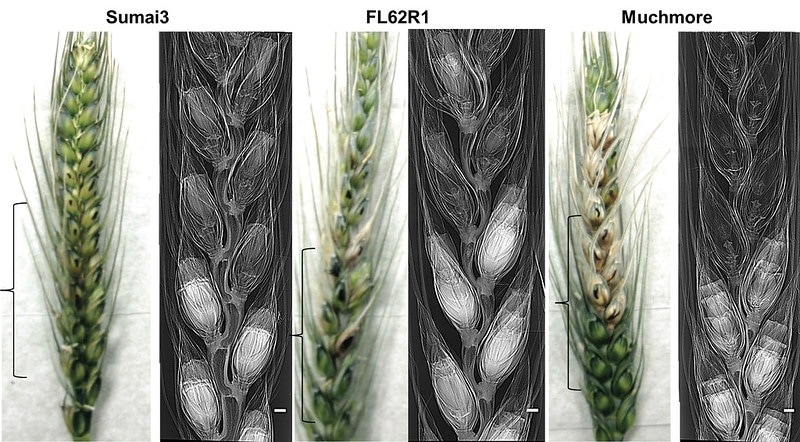Want to look inside a seed? You’ll need a really bright light. One that’s brighter than the sun. Chithra Karunakaran uses such a light to discover what secrets seeds hold.
Karunakaran is a scientist at the Canadian Light Source (CLS), a synchrotron the size of a football field based at the University of Saskatchewan. The synchrotron produces light using electrons accelerated by radio frequency waves and powerful electro-magnets to nearly the speed of light. Energy is added to the electrons as they accelerate so that, when the magnets alter their course, they naturally emit a very brilliant, highly focused light.
A synchrotron can be used to probe matter and analyze a host of physical, chemical, geological, and biological processes.
With a family background in farming and an interest in plant-borne diseases from a young age, her research interests started by using scanning transmission X-ray microscopy (STXM) of agricultural and food science systems.
“The synchrotron produces infrared light, soft X-rays and hard X-rays. With these different types of light, we can look at different things in plant and food samples. You can look through the internal structures, you can look at three-dimensional internal and external structures, as well cellular and sub-cellular inclusions in plant samples,” she says.

More than a million times brighter than the sun, the synchrotron can look through any part of the plant or plant structures.
“For me, the most interesting thing that always stands out in my mind is the vascular system in plants. It’s what carries nutrients and water though different parts of the plant. But using the synchrotron we can look at the vascular system in even in seeds now. The resolution that we get through the X-ray images in the synchrotron is incredible. We can look at the seed’s cell wall composition on the nanoscale.”
Karunakaran was doing her master’s and PhD at the University of Manitoba when she began using optical light/X-rays to look at seed quality, looking through seeds for signs of insects. It’s when she caught the bug, no pun intended, for peering inside the tiny structures.
With new breeding techniques like CRISPR emerging, she says the synchrotron’s potential for helping revolutionize seed science is great.
“If we can combine genetics with this technology, I think that’s the future. Right now, gene expressions are done differently. Researchers extract the RNA or DNA samples. Every gene has a function, either regulating a structure or plant biochemistry. With the synchrotron we can observe both the seed structure and its biochemistry,” she says.
“If we can do that together with a gene expression, we can identify the genes responsible for disease resistance or drought resistance or cold tolerance. And that will be very useful for a plant breeding program to develop crops with the traits that breeders and industry are interested in.”
EDITOR’S NOTE: This is the first entry in our Fields of the Future series, profiling cutting-edge jobs in the industry.









